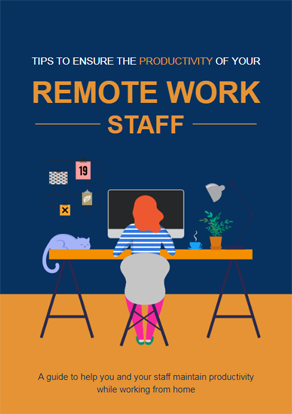The coronavirus outbreak has driven businesses in New York and all over the world to implement remote work setups in order to keep operations afloat. And because face-to-face communication isn’t always viable in this new arrangement, employees are using technology tools to reach out to vendors and clients, exchange information with their peers, and collaborate with their team.
Instant messaging (IM) apps, for instance, have become vital in the time of COVID-19. Small- and medium-sized businesses (SMBs) are using apps like Slack and Microsoft Teams to bridge communication gaps between peers who are working from different parts of the globe.
How are messaging apps affecting workplace productivity?
There are several advantages to using instant messaging apps, all of which contribute to better productivity and more efficient workflows. These benefits include:
Minimized communication delays
If you need a quick follow-up regarding the status of a project, or if you need to ask colleagues about what they thought of your presentation, instant messaging is the way to go. It’s more instantaneous than email — you can even see when people start typing their replies.
IM apps also make communication more efficient, streamlining workflows by minimizing feedback delays. They make real-time discussions possible, which is critical in making decisions for time-bound projects.
Easier search and lookup functions
Employees spend a good part of their work hours looking for information — that new memo sent out by the management, the brief containing changes the clients requested, or the minutes of last week’s meeting. The archive, favorite, or pin functions in IM apps enable users to easily search and look up earlier conversations, using less time in order to get things done.
More organized messaging
Instant messaging apps let you create channels according to topic or participants, so you can conveniently look up conversations and send messages to several people at once. For example, you can create a channel for a certain project and invite only relevant people, or you can make a group for people who like to share their recipes and cooking adventures while in quarantine.
Telegram, for example, allows up to 200,000 people to be added to a channel, so you’re sure that no one in your small business will miss out on important communications.
Learn how to keep your remote staff productive
During this period of social distancing, businesses that can let their staff work from home have both a privilege and a responsibility. If your company is one of them, our free eBook guides your remote work policy towards success.
Ability to hold parallel conversations in one app
IM apps have direct message functions, so you can maintain several conversations at once without leaving the app. This saves time, since you don’t need to navigate between tabs to reply to different colleagues. It also promotes doing more with fewer programs, and helps keep your desktop clutter-free.
Lower work-related stress
Messaging apps are more colloquial than emails, serving as digital spaces where employees can send funny memes or chat about non-work interests. By using IM apps, workers can breathe and relieve their stress by talking candidly, so they can function optimally again.
What are the downsides to using instant messaging apps?
Many studies show that IM apps improve productivity, but there are other researches that indicate otherwise. For one, chatting with colleagues can cause distraction and consume time, causing productivity dips. It’s also easy to ignore or miss notifications, leaving one out of the loop. On top of that, notifications from messaging apps can trigger stress and anxiety.
Although IM apps have drawbacks, the COVID-19 pandemic has forced businesses to utilize such tools to enable employees to talk in real time. If you’re worried about productivity, then set performance standards for your staff to meet. Remind employees to be conscious of the time they spend on messaging apps to ensure their productivity doesn’t suffer.
At a time when businesses need an effective medium of communication, one must not ban the use of instant messaging apps, but strive to create an environment where people can discuss anytime and still deliver quality work within deadlines.
One of the biggest challenges of remote working is how to keep productivity up. Healthy IT can help turn your technology into assets that enable your workforce to get things done faster and more efficiently. Are you ready to make the most of your IT? Get your FREE consultation today.


